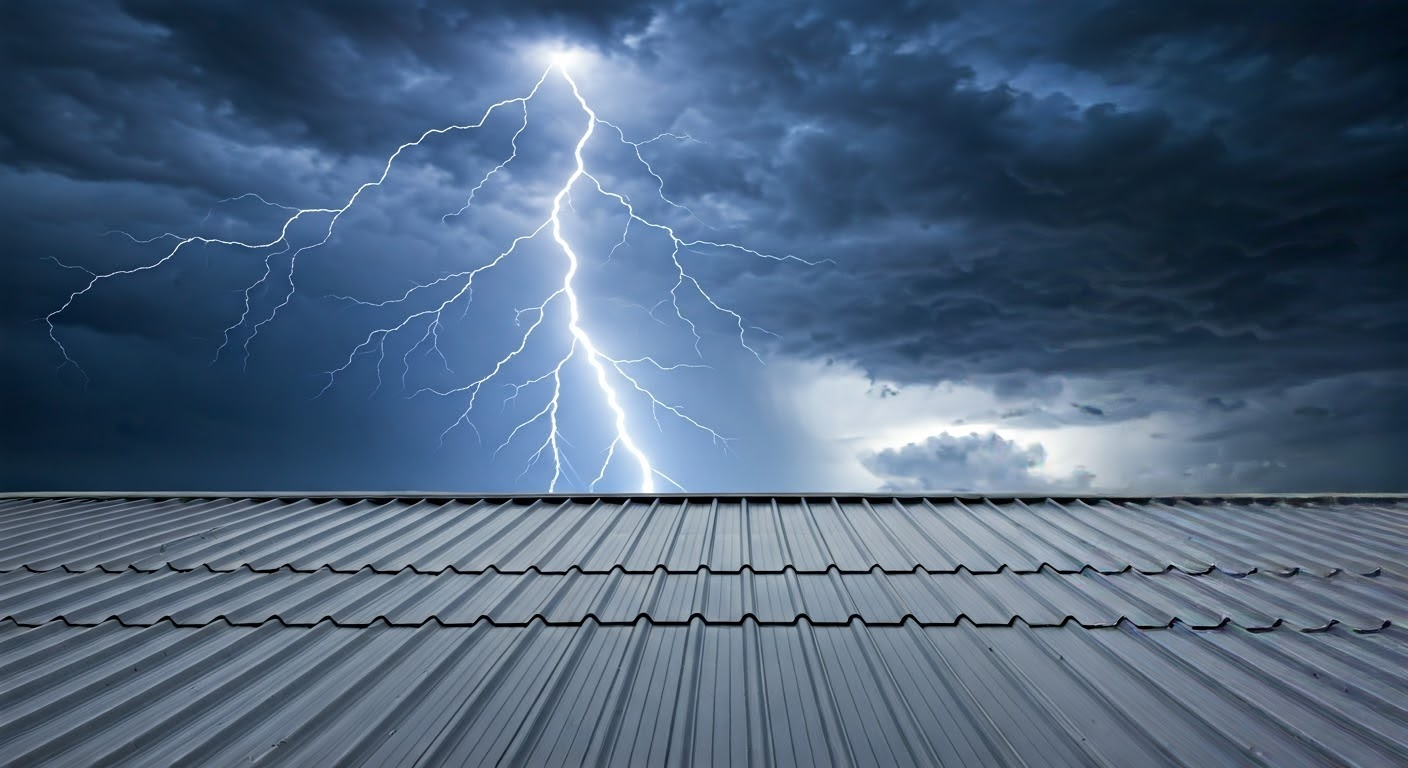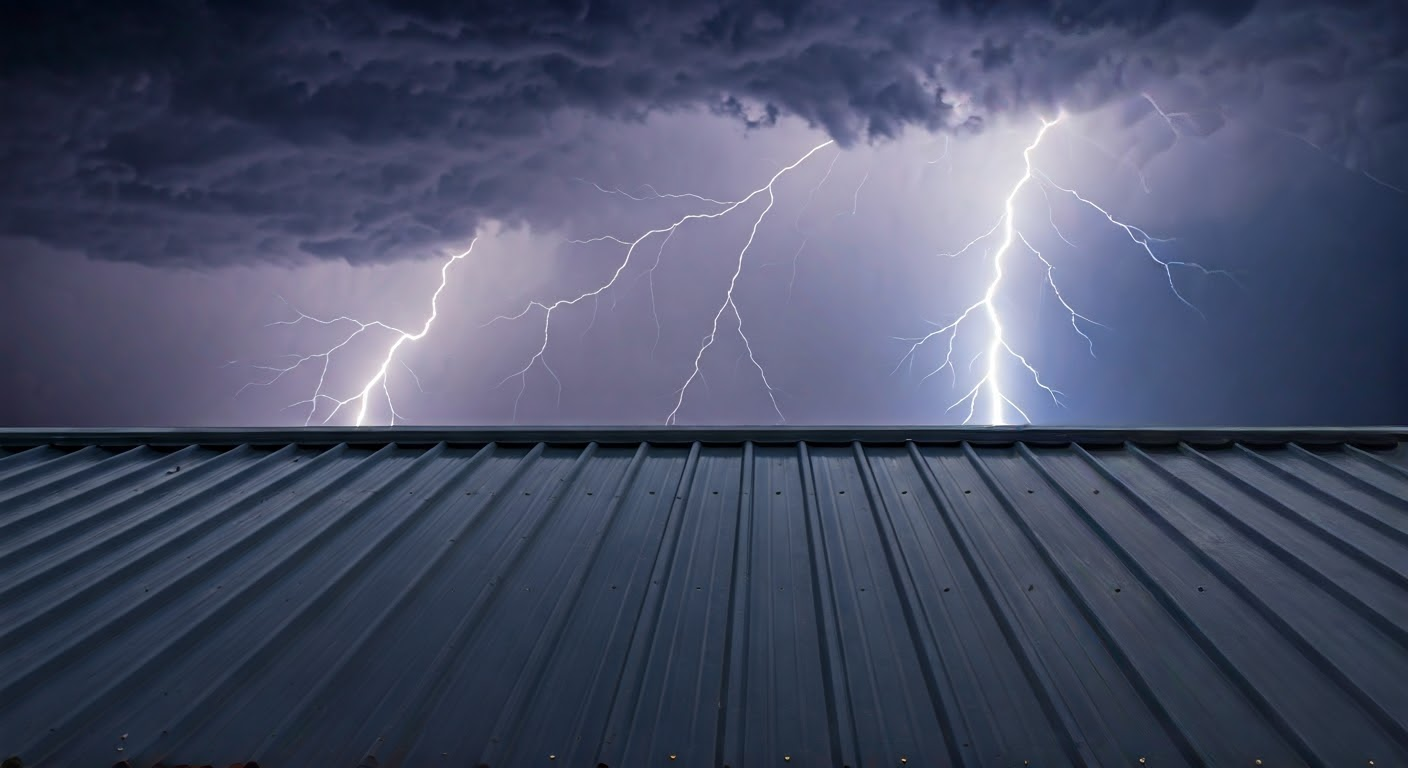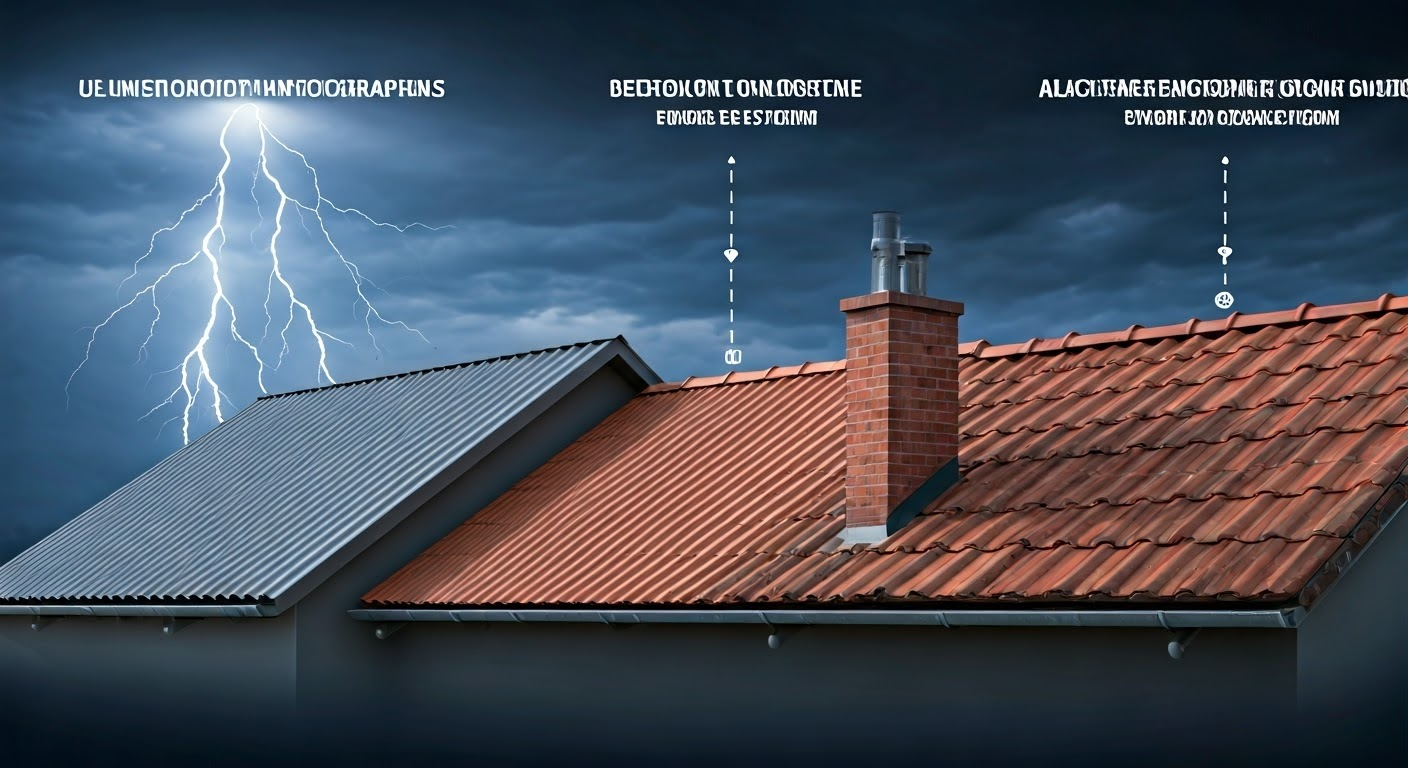
Key Highlights
- A metal roof does not increase the probability of a lightning strike but minimizes associated risks.
- Lightning seeks the path of least resistance based on a structure’s height and surroundings, not its roofing material.
- Metal roofs are conductive but noncombustible, offering a safer option during lightning storms.
- Compared to traditional roofing materials, metal roofs facilitate smoother electrical energy dissipation, reducing potential fire hazards.
- Incorporating a lightning protection system with a metal roof boosts safety and lowers the risk of damage to property and life.
Introduction
Have you ever wondered if a metal roof increases the risk of a lightning strike? This common concern arises from metal’s conductivity and its association with attracting electricity. While it’s true that metal conducts electrical energy, a metal roof does not increase the likelihood of a lightning strike. Instead, it can reduce the severity of potential damage if a strike occurs. At Metal Roof Mobile AL, we ensure your roofing choices balance safety and durability, keeping homes secure no matter the weather challenges.
Understanding Lightning and Metal Roofs

Lightning is an impressive natural phenomenon involving rapid discharges of atmospheric static electricity. While its behavior may seem random, lightning generally seeks the path of least resistance to the ground, ignoring whether a structure has a metal roof.
Metal roofing, contrary to myths, doesn’t attract lightning but has properties that can mitigate damage. The key lies in its ability to conduct electricity efficiently, offering a safer path for lightning should it strike. Let’s examine how lightning interacts with roofs and why metal roofing might be your safest option.
How Lightning Finds Its Path
Lightning’s route to the ground isn’t chosen by roofing material but by the easiest electrical conductor available. When it discharges, this electrical energy seeks the shortest direct path to the earth, often targeting tall objects like trees or poles. Buildings with towering structures are more likely to encounter strikes due to their height, creating an advantage for lower buildings regardless of their roof type.
Air is a poor electrical conductor, so lightning prioritizes material that offers less resistance. For instance, a tall tree might attract lightning before a shorter adjacent building, regardless of whether the building has a metal roof. Location and height play more prominent roles than roofing materials in these scenarios.
Importantly, structures with robust materials and systems in place can redirect electrical energy safely. This concept lays the foundation for understanding how metal roofs, despite being conductive, result in smoother energy dissipation and less overall damage.
Why Metal Doesn’t Necessarily Mean Higher Risk
Metal roofs are made from highly conductive material like steel or aluminum, but this does not translate into a higher lightning strike risk. Instead, their conductivity helps in safely dispersing the electrical energy if a strike occurs. This efficiency minimizes complications, unlike poor conductors such as wood, which can ignite due to heat from electrical resistance.
Another advantage of metal roofing is its noncombustible nature. Unlike asphalt shingles or wood shakes, metal prevents fire hazards during a lightning storm, making it a safer choice for homes. The material becomes part of the building’s safety measures rather than a liability.
By pairing a metal roof with additional safety systems like lightning rods or grounding wires, homeowners can create an even more secure environment. This combination ensures that while metal might conduct electricity, it does so in a way that protects your property from severe damage.
Debunking Myths About Metal Roofs and Lightning

Misconceptions about metal roofs often stem from the belief that metal attracts lightning. In reality, a building’s height and surroundings play a larger role in strike likelihood than the type of material used. Critics may also argue that metal roofs exacerbate damage, which is equally untrue.
In fact, metal provides a safer alternative to standard materials, channeling electrical energy efficiently. Combined with lightning protection systems, metal roofs offer peace of mind during storms, solidifying their reputation as both durable and safe.
The Truth Behind Metal Roof Lightning Strikes
Metal roofing systems are often misunderstood regarding lightning, but the facts reveal these roofs are far from hazardous. Their conductivity allows them to handle electrical charges effectively, posing minimal risk of damage during a strike. Unlike other materials, metal reduces the likelihood of fires or severe structural harm.
To manage potential risks, a lightning protection system (LPS) paired with metal roofing can amplify safety. This system directs electrical energy safely into the ground, bypassing sensitive areas. A properly designed LPS dramatically reduces the risk of severe property damage.
According to the Metal Construction Association and verified by the National Fire Protection Association, metal roofs’ noncombustible nature offers unparalleled protection in lightning incidents. So, while lightning might strike any location, a metal roof ensures your home remains less vulnerable to harm, protecting both structure and occupants.
Comparing Metal Roofs to Other Materials in Lightning Incidents
When lightning strikes, the roofing material significantly impacts the extent of damage. Here’s how metal roofs compare with other materials:
| Roofing Material | Characteristics | Lightning Strike Result |
|---|---|---|
| Metal Roofing | Conductive, noncombustible, durable | Safely redirects energy with minimal damage. |
| Asphalt Shingles | Poor conductor, combustible components | Higher risk of fire due to heat from resistance. |
| Clay Tiles | Noncombustible but brittle material | Susceptible to cracking or impact damage. |
| Wood Shakes | Combustible, poor electrical resistance | High fire risk and extensive damage post-strike. |
Metal roofs emerge as a safer, more durable choice. They offer efficient energy conduction, unlike shingles or tiles, which can sustain significant damage. This durability makes them a valuable investment for areas prone to lightning storms.
Conclusion
In conclusion, while the idea that metal roofs attract lightning is a common misconception, understanding the science behind how lightning behaves can alleviate those concerns. Metal roofs do not inherently increase the risk of lightning strikes; in fact, they may even offer some advantages in terms of safety. The key takeaway is that your choice of roofing material should also consider other factors like durability and protection against weather elements. At Metal Roof Mobile AL, we are dedicated to providing our clients with quality roofing solutions that prioritize safety and longevity. If you’re interested in enhancing your home with a metal roof, contact us today for a consultation and ensure your peace of mind!
Frequently Asked Questions
Does a metal roof increase the chance of a house getting struck by lightning?
No, the probability of a lightning strike depends on factors like building height and surroundings, not on the presence of a metal roof. According to the Metal Construction Association and the National Fire Protection Association, metal roofs pose no additional risk. In fact, they can reduce strike damage.
